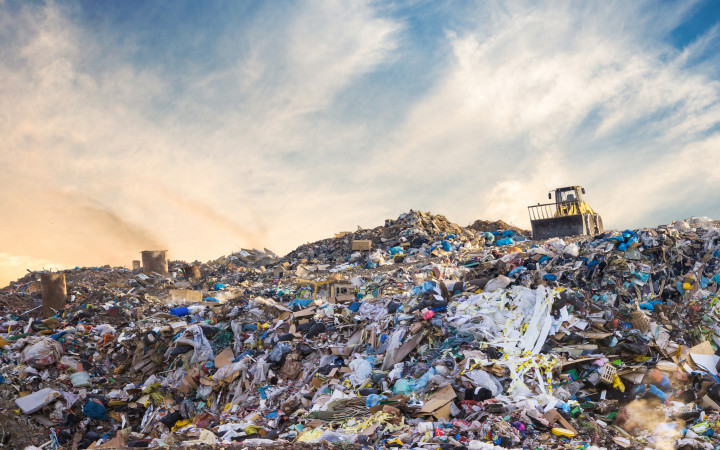Today’s Wonder of the Day was inspired by Shalynn. Shalynn Wonders, “Where is the biggest pile of trash?” Thanks for WONDERing with us, Shalynn!
Do you recycle at home? If you don't, you may want to reconsider after reading through today's Wonder of the Day.
Have you ever stopped to WONDER where all that trash goes that you throw away? Sure, a garbage truck probably stops by your house once a week or so to haul away your garbage. But where does it go from there?
Your local garbage truck probably takes your trash to a nearby landfill. This is a place where trash is buried. Over time, much of it will decompose. Some items, though, such as plastic and styrofoam, can take hundreds of years to degrade and break down.
Your local landfill may be a huge pile of trash, but would you believe that the world's largest pile of trash isn't a landfill at all? It's true! It's actually in the ocean.
The central North Pacific Ocean is home to the Great Pacific Garbage Patch, which is also sometimes called the Pacific Trash Vortex. This area of the ocean is characterized by swirling currents known as the North Pacific Gyre. These currents collect trash and direct it toward their calm center, where it collects and stays there.
The exact size of the Pacific Trash Vortex is hard to estimate. Estimates range from twice the size of Texas to twice the size of the entire continental United States. Whatever estimate is closest, the Pacific Trash Vortex is huge!
The area is marked by high concentrations of plastics, chemical sludge and other debris. Much of the litter consists of tiny pieces of degraded plastic that float at or just below the surface. Because of this, the trash pile isn't easily seen from airplanes or satellites.
The North Pacific Ocean isn't the only place in the world's oceans where you'll find similar collections of trash. Any place with similar swirling currents can collect trash in the same way. For example, a large pile of floating plastic debris can also be found in the Atlantic Ocean.
Although much of the trash in the Pacific Trash Vortex is invisible to the naked eye, scientists estimate that there may be six times as much plastic as there is natural plankton in the area. These tiny bits of plastic end up in the stomachs of fish and other marine birds and animals, causing disruption in the natural habitats of the creatures affected.




